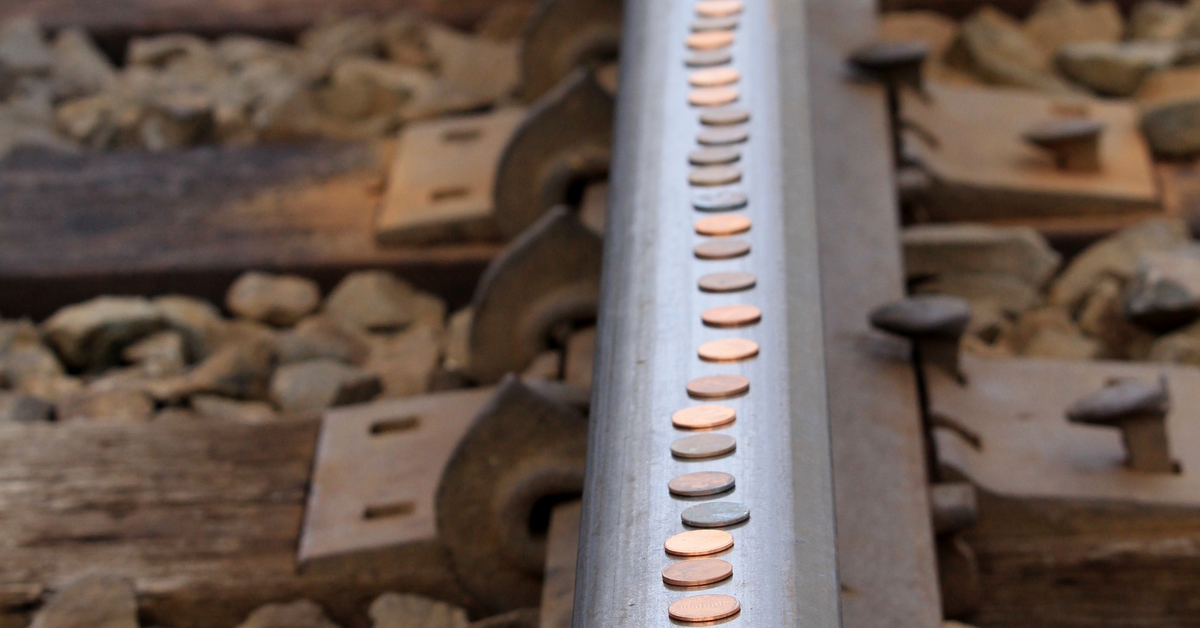Kids have beein placing pennies on train tracks almost as long as there have been trains and pennies. Our grandparents left pennies on streetcar tracks in the hopes that passing streetcars would flatten the coins, rendering them into good luck pieces. A common misperception tied to the activity is that laying a penny on tracks will actually cause a train to derail:
"I smashed a penny on the railroad tie, and was advised by someone that I could have derailed the train. I've heard this before, and I think it could be an urban legend, but wasn't sure."
Has leaving a penny on the tracks ever resulted in the derailment of a train? If it has, we've never been able locate document of such an accident. What has resulted from attempts to place coins on rails, however, is the deaths of those who've engaged in the practice. It doesn't happen often, but it has occurred enough time that such an outcome remains a very real possibility:
- In 1992, Rolyn J. St. Louis (45), a homeless man in Columbus, Ohio, died while pennying the tracks. He'd placed a penny on one set of tracks, then stood on another, unaware that the oncoming train he'd heard was coming down the set he was standing on.
- In 1997, Shelly Lynn Wice (14) and Jessica Ann Hart (14), two teens from Oil City, Pennsylvania, died in similar fashion. They were standing on one set of tracks watching for a train to flatten the pennies they'd left on another set of rails, when a train took both of them. One girl died at the scene; the other died a few hours later in hospital.
- In 1986, Laura Ann Foote (18) of Chico, California, didn't get out of the way of an oncoming train quickly enough — the train flattened her and her penny.
- In 1996, Bruce Darling (25), a father of two, was hit full on by an InterCity train traveling at
110 mph at the Cramlington station in Northumberland, England. He'd been trying to flatten pennies after getting the idea while drinking with friends. - In 2007, retired police officer David Buffa (55) of Ripley, New York, decided to jump in front of a train to show how a penny would be flattened by it. While trying to climb back onto the platform, he was struck by the train.
Pennying the tracks can result in an additional danger: sometimes those coins shoot out from under the train's wheels at incredible speeds, turning them into potentially deadly little projectiles.
Leaving items other than pennies on railroad tracks has caused trains to derail. In July 1999, three Indiana youngsters were charged with having caused the South Shore passenger train to jump the tracks in Michigan City after they placed a brick on the tracks. No injuries resulted, but that was more due to luck than anything else. The derailment of a six-car passenger train isn't exactly something to sneeze at.
Kids have always done oddball things, some more risky than others -- flattening pennies on railroad tracks is a time-honored practice, so cautions against it are not likely to bring about its end. Yet it's worth driving home to souvenir-minded youngsters that it's always important to be extra careful when playing around trains. Indeed, this legend may have begun as a cautionary tale intended to lessen the incentive for children to play with on near railroad tracks.

